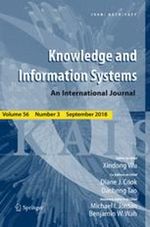 |
TensorCast: forecasting and mining with coupled tensorsMiguel Araujo, Pedro Ribeiro, Hyun Ah Song and Christos Faloutsos2019 |
Abstract
Given an heterogeneous social network, can we forecast its future? Can we predict who will start using a given hashtag on twitter? Can we leverage side information, such as who retweets or follows whom, to improve our membership forecasts? We present TensorCast, a novel method that forecasts time-evolving networks more accurately than current state-of-the-art methods by incorporating multiple data sources in coupled tensors. TensorCast is (a) scalable, being linearithmic on the number of connections; (b) effective, achieving over 20% improved precision on top-1000 forecasts of community members; (c) general, being applicable to data sources with different structure. We run our method on multiple real-world networks, including DBLP, epidemiology data, power grid data, and a Twitter temporal network with over 310 million nonzeros, where we predict the evolution of the activity of the use of political hashtags.
Keywords
Time-evolving network; Coupled tensor; Forecasting
Digital Object Identifier (DOI)
Publication in PDF format
Software
Journal/Conference/Book
Knowledge and Information SystemsReference (text)
Miguel Araujo, Pedro Ribeiro, Hyun Ah Song and Christos Faloutsos. TensorCast: forecasting and mining with coupled tensors. In Knowledge and Information Systems, Vol. 59(3), pp. 497-522, Springer, June, 2019.
Bibtex
@article{ribeiro-KAIS2018,
author = {Miguel Araujo and Pedro Ribeiro and Hyun Ah Song and Christos Faloutsos},
title = {TensorCast: forecasting and mining with coupled tensors},
doi = {10.1007/s10115-018-1223-9},
journal = {Knowledge and Information Systems},
volume = {59},
issue = {3},
pages = {497-522},
publisher = {Springer},
month = {June},
year = {2019}
}